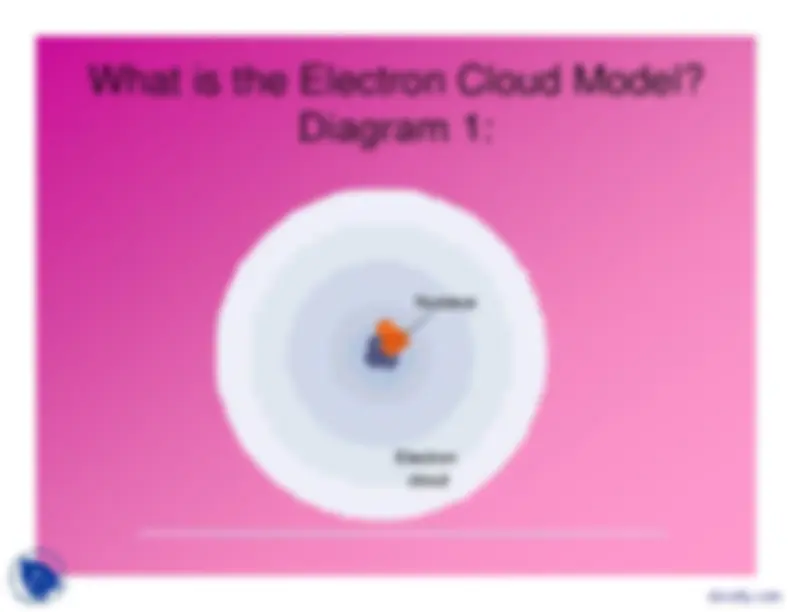




















Study with the several resources on Docsity

Earn points by helping other students or get them with a premium plan


Prepare for your exams
Study with the several resources on Docsity

Earn points to download
Earn points by helping other students or get them with a premium plan
Community
Ask the community for help and clear up your study doubts
Discover the best universities in your country according to Docsity users
Free resources
Download our free guides on studying techniques, anxiety management strategies, and thesis advice from Docsity tutors
Fundamental concepts of chemistry including atomic structure, history of the atom, development of the periodic table, nuclear chemistry, chemical nomenclature and formula, types of reactions, stoichiometry, gas laws, liquids and solids, thermodynamics, chemical equilibrium, acids and bases. This lecture includes: Atomic Structure, Parts of Atom, Proton, Neutron, Electron, Nucleus, Quark, Isotope, Electron Cloud Model
Typology: Slides
1 / 26

This page cannot be seen from the preview
Don't miss anything!



















http://www.eskom.co.za/nuclear_energy/fuel/fuel.html
http://www.bmb.psu.edu/courses/bisci004a/chem/atoms.jpg
the atomic nucleus. Neutrons werediscovered by James Chadwick in 1932.
early 1970's showed that neutrons aremade from other particles called quarks.Neutrons are made from one 'up' quarkand two 'down' quarks.
Electrons are negatively charged particles
that surround the atom's nucleus.Electrons were discovered by J. J.Thomson in 1897. Electrons determine properties of the atom.
Chemical reactions involve sharing orexchanging electrons.
-^
Believed to be one of the basic building blocks ofmatter. Quarks were first discovered inexperiments done in the late 1960's and early1970's.
-^
Three families of quarks are known to exist.Each family contains two quarks. The first familyconsists of Up and Down quarks, the quarks thatjoin together to form protons and neutrons.
-^
The second family consists of Strange andCharm quarks and only exist at high energies.
-^
The third family consists of Top and Bottomquarks and only exist at very high energies.